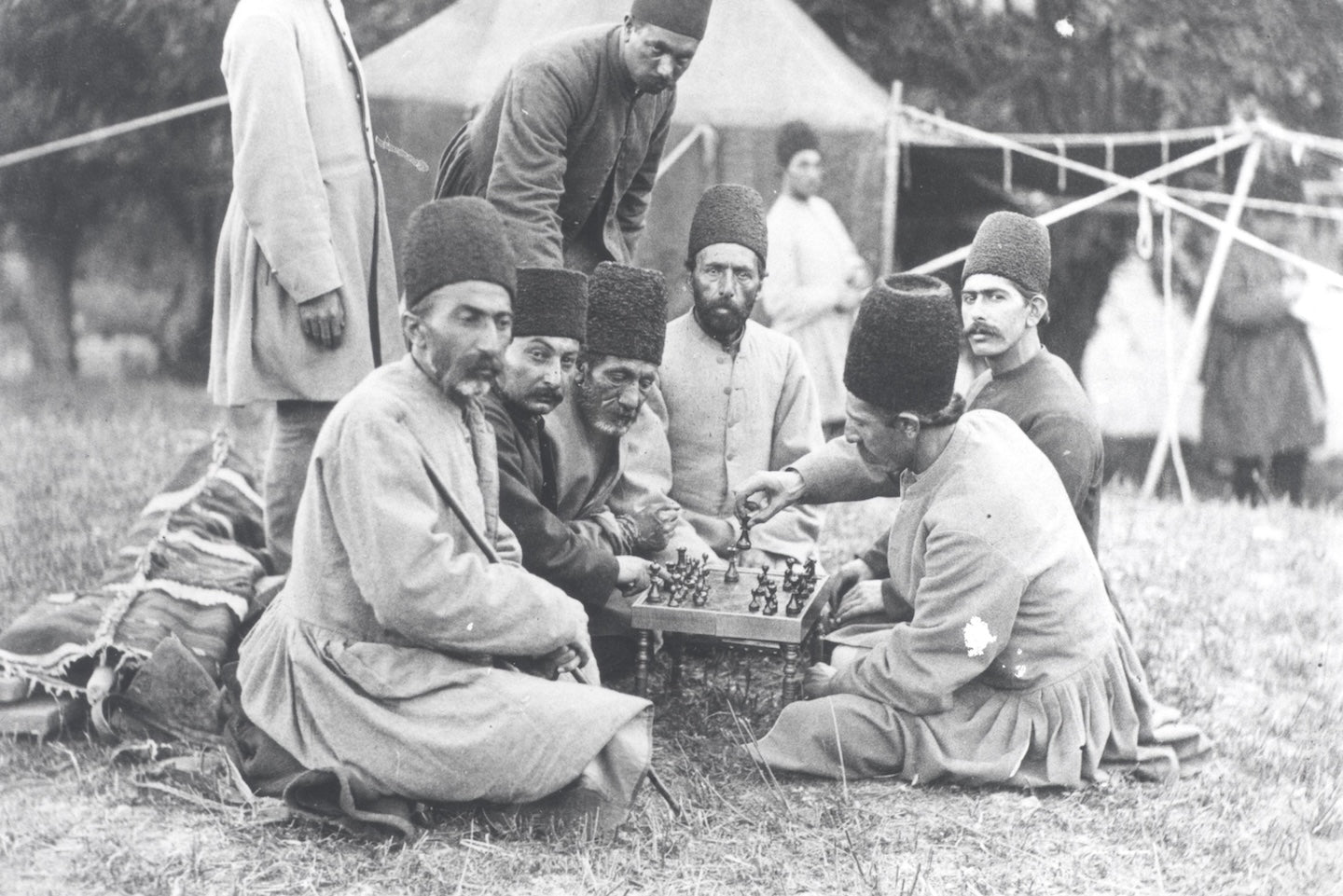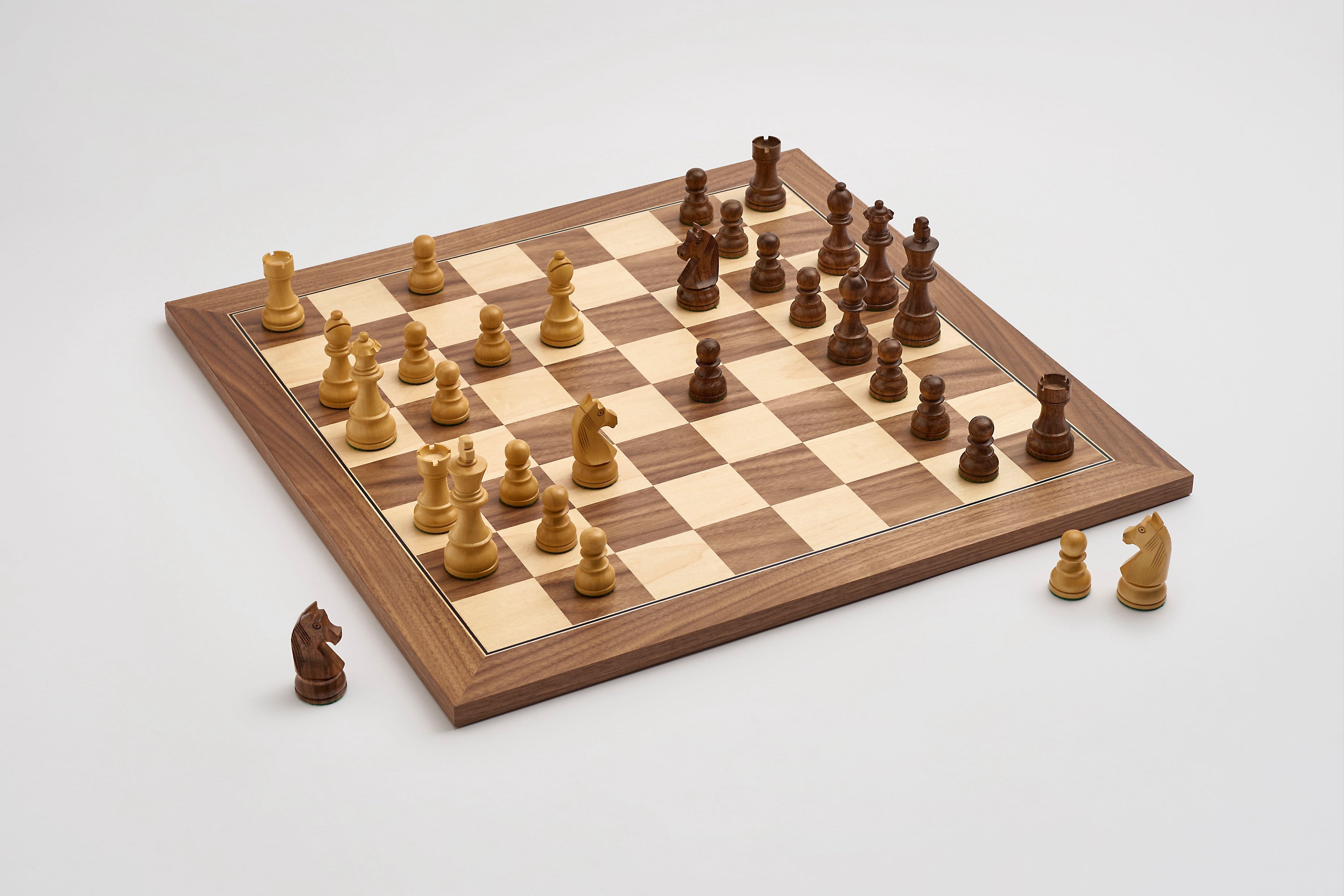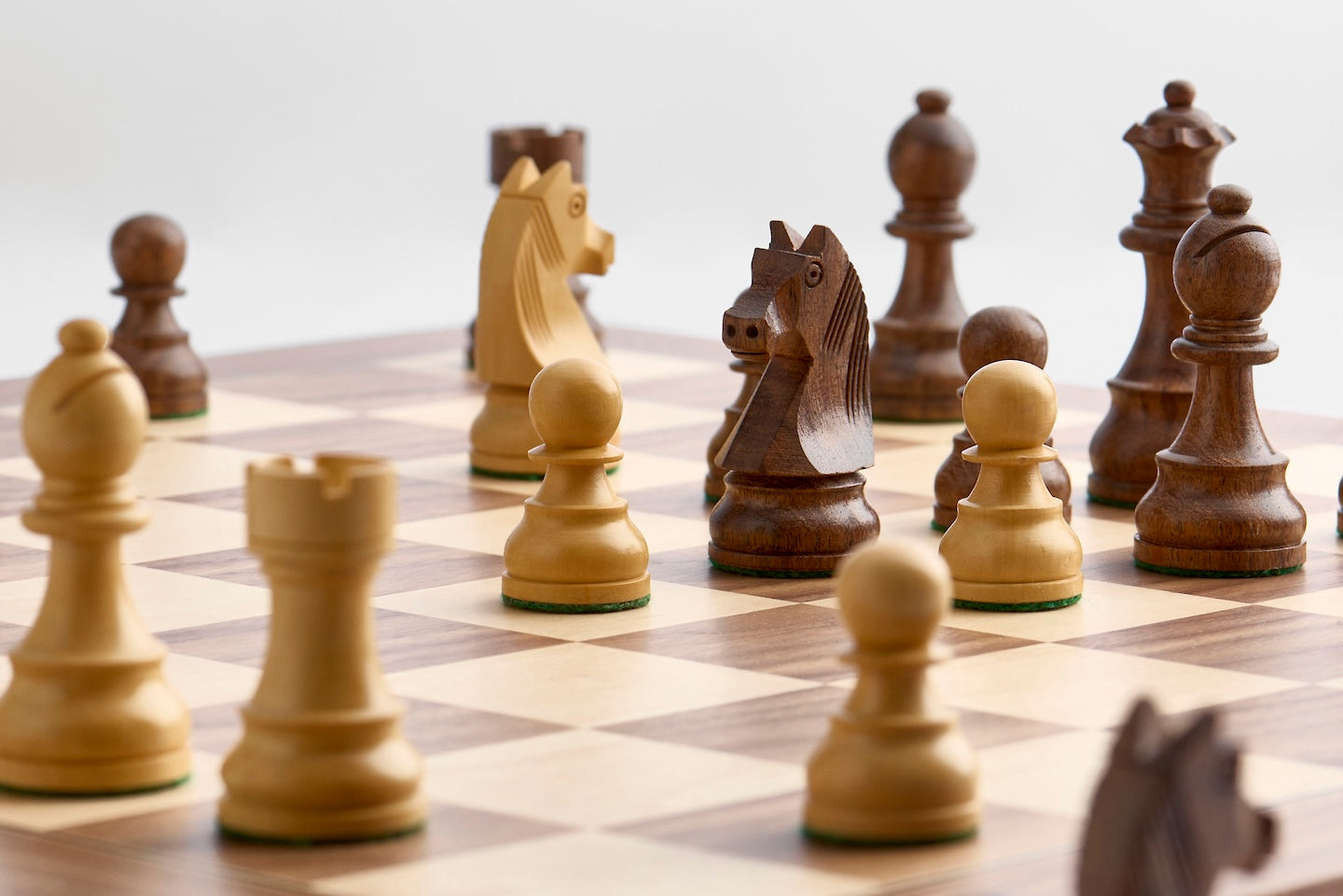
The history of chess – from India to your living room
Chess is not just a game. It is a story that has traveled across borders and millennia – and which still fascinates us today.
Here is the history of chess – in brief.
Origin: India, circa 500 AD
The first chapter in the history of chess begins in India. Here, a game called chaturanga was played at court. It had many similarities to the chess game we know today: four types of pieces (infantry, elephants, knights, and chariots), and a board with 64 squares.
The word chaturanga means "the four parts of the army," and the game was used as a way to simulate war and strategy.
Via Persia and the Arab world to Europe
When the Persians took over parts of India, they brought the game with them. Here it was called shatranj , and the term “checkmate” (from Persian shah mat – “the king is helpless”) emerged.
Later, the game spread to the Arab world and from there to Europe – including via trade routes and Moorish conquests in Spain. During the Middle Ages, the game became popular among the nobility and intellectuals throughout Europe.
Chess as we know it
It was not until the 15th century that the game acquired the rules we know today – with the queen as the strongest piece and the pawn's ability to transform.
Later, in the 19th century, organized tournaments began to take shape, and in the 20th century, world championships came along. Chess went from being a pastime of kings to a global game for everyone.
Today: A game on time
In an age of screens and speed, chess has retained its special calm. It is still strategy, but also presence. It requires focus, but gives room for contemplation.
Many forget, but chess is not just digital. It has something physical about it. The pieces in the hand. The weight of the wood. A game between people – not machines.
At Norwald, we carry the story forward. Our handmade chess sets are created in the very birthplace of chess. Not by machines, but by people – with respect for the materials and the game's long tradition.
Also read why chess is a valuable activity for children today.
Sources and read more:
-
Murray, HJR A History of Chess (1913)
-
Hooper, D. & Whyld, K. The Oxford Companion to Chess (Oxford University Press, 1992)
-
Eales, R. Chess: The History of a Game (Batsford, 1985)
-
Wikipedia articles on Chaturanga , Shatranj and Chess history – consulted April 2025
-
Various historical notes and image archives from Golestan Palace Library and Wikimedia Commons
Photo above: Iranian courtiers from the Qajar dynasty playing chess in Mazandaran, 1893. The image comes from the Golestan Palace archive and shows how chess – even in 19th-century Persia – was a cultivated occupation for the elite. The game was widespread throughout the Islamic world, where it was considered both an education and a pastime.



